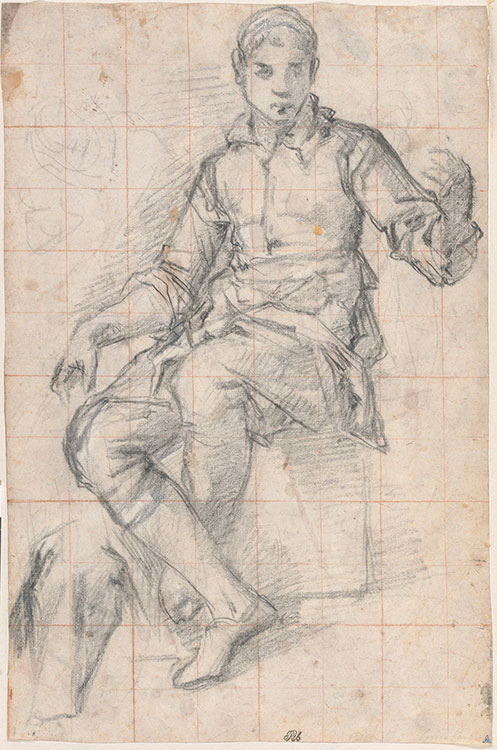
At once strikingly naturalistic and elegantly stylized, this drawing is a brilliant example of Florentine draftsmanship in the late sixteenth century. The carefully posed serpentine figure, whose elongated arms are arranged as if to hold an invisible musical instrument, is probably a studio model or garzone
Giovanni Battista Naldini
Italian, 1535–1591
Study of a seated youth, ca. 1575
Black chalk, with touches of white chalk, squared in red chalk
Richard and Mary L. Gray, promised gift to the Morgan Library & Museum
Gray Collection Trust, Art Institute of Chicago
Photography by Jamie Stukenberg, Professional Graphics Inc.
Ian Hicks: I'm Ian Hicks. I'm the Moore Curatorial Fellow at the Morgan Library & Museum. Naldini's immediate and informal study of a seated youth appears to have been made from life, sketched while a young workshop assistant or garzone held the pose. As a young man, Naldini was himself a junior member of a prominent workshop, training under Jacopo Pontormo from 1549 until the master's death in 1556. After a sojourn in Rome, Naldini returned to Florence in 1562 and worked on several important commissions awarded by the Grand Duke of Tuscany and supervised by Giorgio Vasari, whose work hangs elsewhere in this exhibition. In contrast to Giuseppe Salviatti's more elaborate and exacting life drawing of a bearded man nearby, Naldini's study exhibits an economy of means. The initial contours are broadly rendered in black chalk, in places reinforced with more incisive lines. The fall of light is summarily suggested by spare hatching. The result is both distinctive and deeply rooted in a tradition of Florentine draftsmanship. This expressive study is squared in red chalk, indicating that the artist may have intended to transfer the figure into a painted composition, though no such work is known.
